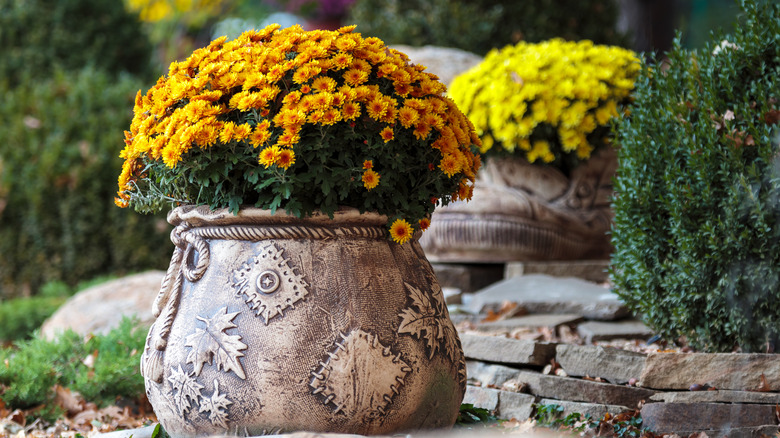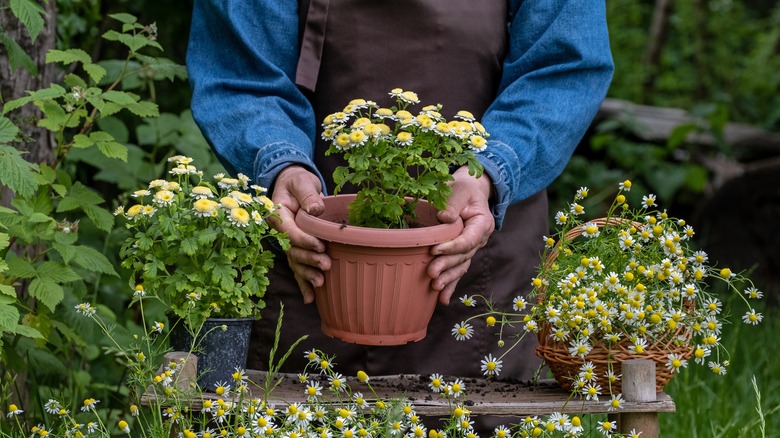Clever Hacks For Deadheading Mums You Need This Fall
Mums are a popular choice for autumn decor and can create a simple but vibrant display outside your home. If you get mums in containers from your local nursery, they are often trimmed and pinched back to create maximum flower buds that bloom all at once. Though these flowers can bloom for many weeks, getting the most out of your mums requires a bit of maintenance to keep them blooming and looking neat, and the most important task is deadheading. We've gathered a few hacks you can use to deadhead mums more efficiently.
One helpful tip is to plan to do all of your deadheading on one plant at the same time. This ensures you won't miss any flowers and can wait a few days before another round of deadheading as more blooms fade. Large "basket" mums can have hundreds of blooms on one plant, so you should plan to deadhead the spent blooms in sections with a clean pair of garden snips or scissors — working from one side to the other — and turning the container as you go.
Snipping off all of those flowers can leave a pile of debris, and while you can use a small hand broom, an even faster method is to use the hose attachment on a wet-dry type vacuum to gently suck them all up and clean any spilled potting soil. This can be a real time saver, especially if you have more than a couple of pots of mums to deadhead. Using a vacuum keeps your display looking neat so you don't have a mess on the deck or front porch.
Other tips for deadheading mums and cleaning up
Usually, gardeners wait to deadhead flowers until they start to look dry and droopy or have started to drop petals. With mums, the main sign that they need to be removed is when the blooms look dried out and/or turn brown. This means that the flower has reached the end of its bloom cycle, and it can be removed to make room for more. This also lets the plant direct its energy to producing new blooms.
When cleaning up, check your large, potted chrysanthemum plant with lots of blooms. Look for any broken stems and flower heads hanging loose. These flowers are in death's fastlane because they're not getting nutrients from the plant. Remove them by snipping, and use your shop vac to clean up the trimmed stems. Large baskets of mums benefit from frequent deadheading and trimming, so having an easy clean-up hack will make life easier.
Another reason your potted mums' blooms might fade faster than normal is if the plant is root bound. This can lead to more frequent deadheading as the plant won't receive enough water at its roots. When putting mums out for display, consider repotting them. Loosen the root ball gently and place it in a slightly larger pot with fresh soil. You may see new roots with green growth around the edges of the root ball: repotting will allow these roots to develop and produce more flowers. This is also a sign that the mum may be a candidate for planting so that it will come back next year in your garden. After repotting, any potting soil, spent flower heads, or other plant debris can simply be picked up with your shop vac.

